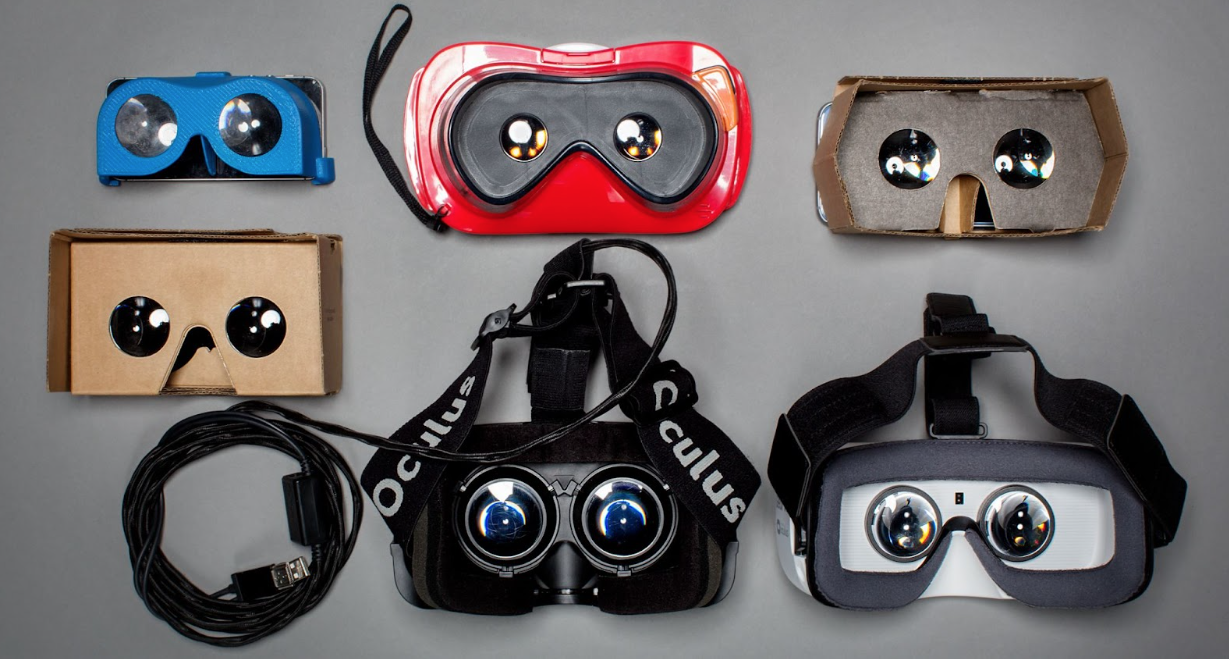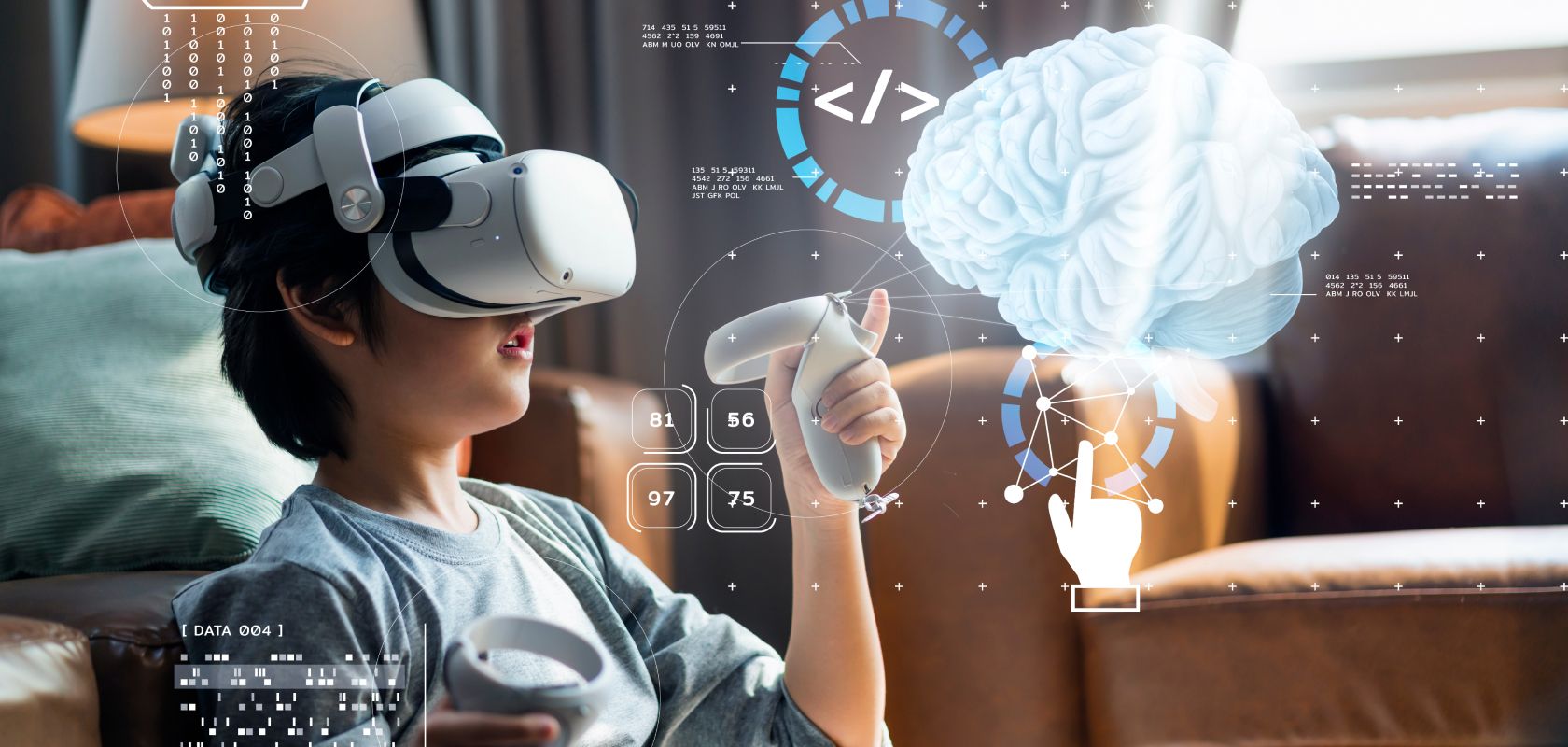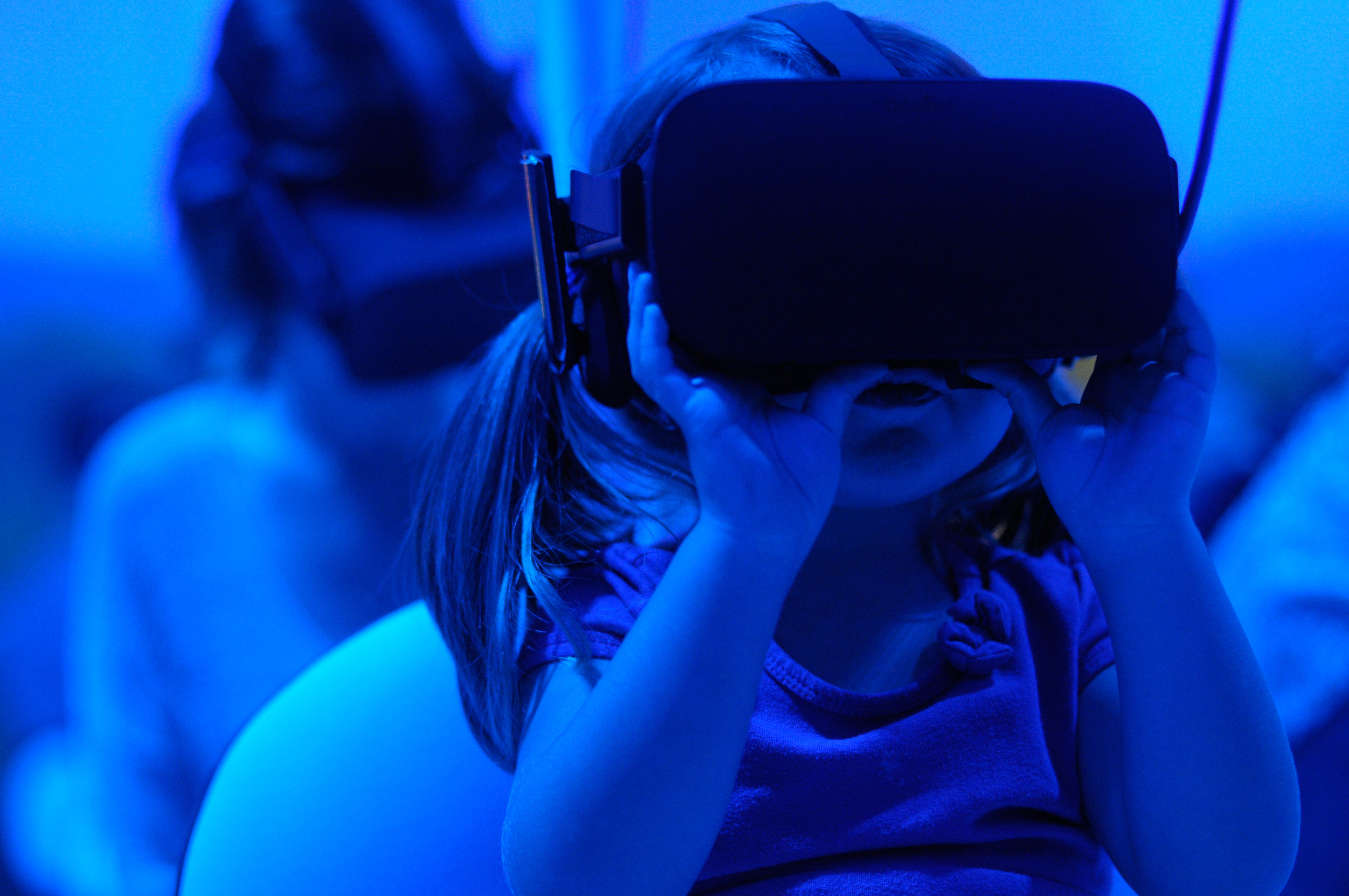Transforming the Oil Industry
The Technology of Oil and Gas
Tonic3 develops and executes strategies that drive profit through Digital Transformation. Practically that means we are built to help clients hone the right strategy, implement the right technology, and build the right long-term capabilities to deliver lasting transformation.
Industries
We believe that effective technology helps people succeed in their daily lives. So we help our clients engineer useful technology for their clients, partners, and employees. That translates to every major industry, but over the years we’ve developed several core areas of expertise.

A VR headset is a device worn on the head that’s used to experience virtual reality (VR). It uses a combination of lenses and software to display separate images to each eye to create a 3D effect. This makes it seem as if you’re in an entirely new environment. These headsets also use a combination of head and eye trackers to translate your movements into the virtual world. Together, these tools can be used to create an immersive virtual experience
There are three main types of VR Headsets:
This type of VR is perfect for people who are always on the go. As the name suggests, you don’t need any extra equipment apart from the headset to view a VR experience. The setup process is easy as well. To get started, you must simply charge the battery and create an account.
Another advantage of standalone VR is that it’s wireless. Without wires limiting you to one place, you can play and watch from anywhere. However, standalone VR has a lower resolution and refresh rate in comparison to PC-operated headsets.
Some of the best standalone VR headsets are the Oculus Quest, Meta Quest 2, and the HTC VIVE Focus 3.
Tethered VR headsets don’t compromise on the quality of your virtual experience. While they may be expensive, they offer high resolution and refresh rates to provide the most immersive and engaging experiences.
The downside of these types of VR headsets need to be connected to a powerful PC, which can add to the cost. The connection is also wired, which can limit your movement. However, there are a few types that come with wireless adapters, allowing you to enjoy the best of both worlds.
Smartphone VR is the cheapest and most accessible VR headset option available. All you need to do is strap your mobile phone into the device to see a virtual reality experience.
There are varying qualities of mobile VR headsets. There are cheaper and less comfortable models and pricier, more comfortable models. The quality of the image of these headsets, however, solely depends on the smartphone you use.
There are many types of mobile VR headsets available, including the Samsung Gear VR and the Utopia 360°.
In 1838, Charles Wheatstone’s research demonstrated that the brain processes the different two-dimensional images gathered by each eye as a single object of three dimensions. Viewing two side-by-side images of a subject captured at slightly different angles through a stereoscope gave the user a sense of depth and immersion. Based on this concept, the View-Master stereoscope was developed in 1939 and used for “virtual tourism.”
The design principles of the stereoscope continue to be used today. Low-budget, mobile VR headsets, like the popular Google Cardboard, use the same concept to create VR experiences.
The first functional VR headset was created in 1968 by Ivan Sutherland and his student, Bob Sproull. Presented as “the ultimate screen,” this headset featured an embedded stereoscopic screen that displayed simple shapes.
Unlike a View-Master, this screen wasn’t encased within the device; the shapes were superimposed directly clear lenses, altering the users view of the real world. This meant that Sutherland’s invention wasn’t just the first VR headset, but the first AR headset, too.
Sutherland explains this functionality in depth in his paper about the invention: "Half-silvered mirrors in the prisms through which the user looks allow him to see both the images from the cathode ray tubes and objects in the room simultaneously. Thus displayed material can be made either to hang disembodied in space or to coincide with maps, desk tops, walls, or the keys of a typewriter."
However, the most innovative aspect of the invention wasn’t the display itself but how it displayed it. The headset used a computer to generate 3D wire-frame shapes and simple rooms. As these images were viewed, sensors on the headset relayed the users’ head movements to the computer, which would then adjust to the change in perspective and redraw the model. The new model was then clipped by two independent display processors to appear 3D. Although this process would be seen as slow today, the headset worked quickly enough that it gave the impression that the user was standing inside a virtual environment.
Unfortunately, the helmet never got past the testing stage. Because it was so heavy, the device needed to be suspended from the ceiling using a mechanical arm while it was used. That’s why it was nicknamed “the Sword of Damocles,” in reference to the famous Roman myth.
Virtual reality is quickly gaining popularity and has become very important to the development of our society and technological landscape. Therefore, it’s crucial to understand why and how it can be so revolutionary in so many areas of our lives.
Virtual reality is the next step in entertainment media, commercial interaction, and healthcare. The technology saves time and resources, which can be useful for many industries. But beyond that, virtual reality is changing our world and the way we interact with one another in many ways. Read on to learn more about how this amazing technology can affect you, your family, and those around you.
Virtual reality has started to play a major role in the workplace. Dozens of industries have already adopted the technology and realized how big of an impact it can have on their business dealings and the way they work. VR helps to cut down on transportation, computer equipment, and other costly investments, but it’s also an innovative and impressive way to show clients and competitors that the company is ahead of the curve when it comes to trends.
Virtual reality, augmented reality, and mixed reality (MR)—a combination of the two—have begun to play a huge role in architecture and construction, expanding our view of what’s possible. For example, architects can use this tech to design their projects and even explore them first-hand using a headset to get a better understanding of the space. Similarly, builders can show off their model homes to clients with the help of a VR headset.
The use of VR in these industries is minimal at the moment, but once there’s a better grasp of the potential profit gains and cost cuts it can offer, it will likely catch on and become more widespread.
Real estate is one of the largest markets in the world. In fact, the industry is so big that it can be slow to adopt new technology. VR, however, is gaining traction in the market quite quickly and has been a game-changer in helping agencies take off.
Real estate agents face some very simple roadblocks. Nevertheless, these seemingly straightforward issues can create a lot of problems when trying to sell a home worth hundreds of thousands of dollars.
In many different parts of the country, real estate agents face weather situations that can really hinder selling a home. In mountainous areas, for example, cabins may be inaccessible for normal transportation. It’s impractical for a real estate agent to take clients out to the cabin for a tour on a snow machine. But now, with VR, they don’t have to! A three-dimensional virtual tour can be created in the summertime when the cabin is at its best, making it easy to show off the property to clients in a nice, warm office. In some cases, it might not even be necessary to come into the office, as a client with the right equipment could do a walkthrough of the property from the comfort of their own home. The first impressions of a house are really important, so ensuring that potential buyers have a good experience is key, and VR can help accomplish that aim.
There are some very interesting new developments with VR in healthcare, which aren’t just changing how doctors approach their duties but the way the family members of sick individuals understand what their loved one is going through.
Doctors have been going to school for close to a decade by the time they’re ready to actually operate on somebody. That amount of schooling is difficult enough, especially when you can’t practice the real thing without endangering a life. However, with the power of virtual reality, surgeons can practice virtually on the exact patient that they’ll be working on! This is great for training.
Alongside virtual reality practice, an augmented reality set is currently in development that will allow doctors to see important information as they perform their operations. These head-mounted displays could show, for instance, overlays of different scans that have been performed on the patient during surgery to enhance the doctor's understanding of the issue.
Imagine being in a classroom where, instead of just reading about the Amazon rainforest, you could actually explore it! Where, instead of learning how white blood cells fight off infection, you could see them do it.
As a kid, many of us watched the popular show The Magic School Bus and wished that we too could shrink or fly to see concepts in action. Unfortunately, such a bus doesn’t exist in our world. But what we do have is virtual reality. It may not be quite as good as actually being there, but it’s the next big thing.
For the cost of just two to three field trips, each student could receive a simple virtual reality headset that would change the way that they learn, allowing them to explore and engage. Homeschooled kids could also have a more enriching, hands-on experience with this technology.
In a few years, virtual reality will no doubt change the way that children receive their education. Most of us learn new concepts best visually. So, what better way is there to learn than by getting hands-on and being immersed in the experience with a VR headset?
This isn’t a new idea. Our society has been imagining VR education for years through various media. In the novel Ready Player One, for instance, the main character doesn’t even go to school but instead attends his classes through the virtual reality program called the Oasis.
What if you could explore the Mariana Trench, walk alongside ancient dinosaurs, or bungee jump from the Eiffel Tower…all from the comfort of your own couch? All these experiences and more will be possible with the metaverse, a virtual world developed by the top tech gurus in the world.
When it’s finished, the metaverse promises to stimulate users’ senses with life-like experiences, whether they decide to use that capability to meet their favorite celebrities, do dare-devilish stunts, explore the world (or the fantasy worlds made up by others), or just meet up with a friend. In the metaverse, you’ll be able to be anyone, go anywhere, and do anything you want with the help of a simple VR headset, smart clothing, and tactile-responsive gloves.
Using what Melanie Subin, a director at The Future Today Institute in New York City, says is a mix of “physical and behavioral biometrics, emotion recognition, sentiment analysis, and personal data,” the metaverse will be able to create a customized, enhanced reality for each individual.
By 2030, Subin predicts that “a large proportion of people will be in the metaverse in some way.” Some will simply use it “to fulfill work or educational obligations [while others] will live the majority of their waking hours ‘jacked in.’”
Patrick Cozzi, the CEO of the 3D tech company Cesium who’s also heavily involved in enhancing the metaverse, agreed. In the future, he says, “AR wearables may be as pervasive as smart phones are today.”

The Technology of Oil and Gas

Education is continually evolving, and with the advent of technology, it's taking exciting new forms. One such innovation that's making waves in...

As both VR and AR technologies continue to grow and evolve, they are starting to be used more and more in our everyday lives.